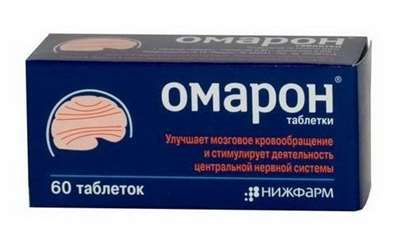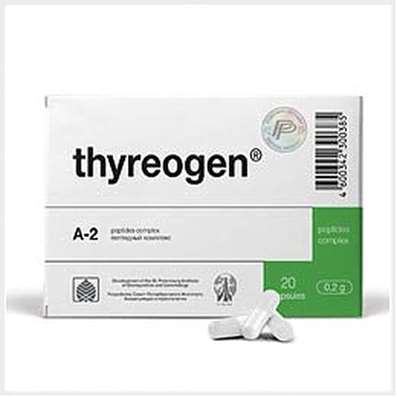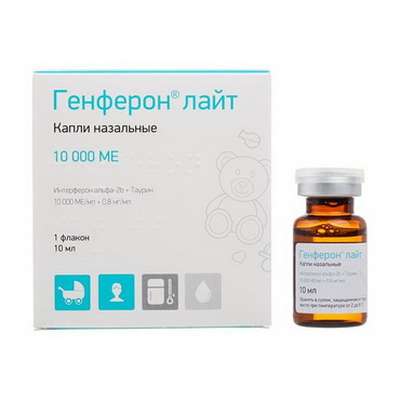Instruction for use: Lexotan
I want this, give me price
Dosage form: tablets
Active substance: Bromazepam*
ATX
N05BA08 Bromazepam
Pharmacological group:
Anxiolytics
The nosological classification (ICD-10)
F41 Other anxiety disorders: Anxiety status; Anxiety; Chronic alarm; Sense of anxiety; Anxious-hypothetical states; Stopping an alarm; Nonpsychotic anxiety disorders
F48 Other neurotic disorders: Neurosis; Neurological diseases; Neurotic disorders; Neurotic condition; Psychoneurosis; Anxious-Neurotic Conditions; Chronic neurotic disorders; Emotional reactive disorders
F60 Specific personality disorders
G43 Migraine: The pain of migraine; Migraine; hemiplegic migraine; Migraine headache; A migraine attack; Continuous headache; hemicranias
G47.0 Disorders of falling asleep and maintaining sleep [insomnia]: Insomnia; Insomnia, especially difficulty falling asleep; desynchronosis; Prolonged sleep disturbance; Difficulty falling asleep; Short-term and transient insomnia; Short-term and chronic sleep disorders; Short or shallow sleep; Violation of sleep; Disturbed sleep, especially in the phase of falling asleep; Infringements sleep; sleep disturbances; Neurotic sleep disturbance; Shallow superficial sleep; shallow sleep; Poor quality of sleep; Night awakening; sleep Pathology; Postsomnic violation; transient insomnia; Trouble falling asleep; Early awakening; Early morning awakening; Early awakening; sleep disorder; somnipathy; persistent insomnia; difficult to fall asleep; difficulty falling asleep; Difficulty falling asleep in children; persistent insomnia; Worsening sleep; Chronic insomnia; Frequent night and / or early morning awakening; Frequent nocturnal awakening and a sense of the depth of the non-sleep; Night waking
I10 Essential (primary) hypertension: hypertension; Arterial hypertension; Arterial hypertension crisis course; Essential Hypertension; Essential hypertension; Essential hypertension; Essential hypertension; Essential hypertension; Primary hypertension; Arterial hypertension, complications of diabetes; The sudden increase in blood pressure; Hypertensive disorders of blood circulation; hypertensive condition; hypertensive crises; arterial Hypertension; malignant Hypertension; Hypertonic disease; hypertensive crises; accelerated hypertension; malignant hypertension; The aggravation of hypertensive disease; Transient hypertension; Isolated systolic hypertension
I15 Secondary hypertension: Arterial hypertension, complications of diabetes; hypertension; The sudden increase in blood pressure; Hypertensive disorders of blood circulation; hypertensive condition; hypertensive crises; hypertension; arterial Hypertension; malignant Hypertension; hypertensive crises; accelerated hypertension; malignant hypertension; The aggravation of hypertensive disease; Transient hypertension; hypertension; Arterial hypertension; Arterial hypertension crisis course; renovascular hypertension; Hypertension symptomatic; Renal hypertension; Renovascular hypertension; renovascular hypertension; Symptomatic hypertension
N94.6 Unspecified Dysmenorrhea: Pain in menstruation; Functional disorders of the menstrual cycle; Functional disorders of the menstrual cycle; Menstrual cramps; Menstruation disorder; Pain during menstruation; Painful irregular menstruation; Algodismenorea; Algomenorea; Pain syndrome with smooth muscle spasms; Pain syndrome with smooth muscle spasms (renal and biliary colic, intestinal spasm, dysmenorrhea); Pain syndrome with spasms of smooth muscles of internal organs (renal and biliary colic, intestinal spasm, dysmenorrhea); Disalgomenorrhea; Dysmenorrhea; Dysmenorrhea (essential) (exfoliative); Menstrual disorder; Menstruation painful; Metrorrhagia; Violation of the menstrual cycle; Menstrual irregularities; Prolactin-dependent disorder of the menstrual cycle; Prolactin-dependent disorder of menstrual function; Pain syndrome with spasms of smooth muscles of internal organs; Spastic dysmenorrhea; Primary disalgomenorrhea
R45.7 Condition of emotional shock and stress, unspecified: Exposure to stress factors; Exposure to extreme situations; Neuropsychic stresses; Professional stress; Psychoemotional overload and stress; Psychoemotional stress; Stressful condition; Stress; Stress loading; Stressful condition; Stressful situations; Stress of everyday life; Chronic stress; Long-term emotional stress; Psychological stress in air flights; Psychoemotional stress in stressful situations
Z100 * CLASS XXII Surgical practice: Abdominal surgery; adenomectomy; Amputation; Coronary angioplasty; Angioplasty of the carotid arteries; Antiseptic skin treatment for wounds; Antiseptic Hand; Appendectomy; atherectomy; Balloon coronary angioplasty; Vaginal hysterectomy; The coronary bypass; Interventions in the vagina and cervix; Interventions on the bladder; Intervention in the mouth; Restoration and reconstructive surgery; Hand hygiene of medical personnel; Gynecologic surgery; Gynecological intervention; Gynecological surgery; Hypovolemic shock during operations; Disinfection of purulent wounds; Disinfection of wounds edges; Diagnostic intervention; Diagnostic procedures; Cervical Diathermocoagulation; Long-surgery; Replacing the fistula catheters; Infection in orthopedic surgery; Artificial heart valve; cystectomy; Short-term outpatient surgery; Short-term operation; Short surgical procedures; Krikotireotomiya; Blood loss during surgery; Bleeding during surgery and in the postoperative period; Kuldotsentez; laser photocoagulation; laser coagulation; retinal laser coagulation; Laparoscopy; Laparoscopy in Gynecology; CSF fistula; Small gynecological operations; Small surgical procedures; Mastectomy and subsequent plastic; mediastinotomy; Microsurgical operations on the ear; Mukogingivalnye operation; suturing; Minor surgery; neurosurgical operation; Immobilization of the eyeball in ophthalmic surgery; testectomy; pancreatectomy; Perikardektomiya; The period of rehabilitation after surgery; The period of convalescence after surgery; Percutaneous transluminal coronary angioplasty; Pleural thoracentesis; Pneumonia postoperative and posttraumatic; Preparation for surgical procedures; Preparation for surgery; Preparation of the surgeon's hands before surgery; Preparation of the colon for surgical procedures; Postoperative aspiration pneumonia in neurosurgical and thoracic surgery; Postoperative nausea; Postoperative bleeding; postoperative granuloma; postoperative shock; The early postoperative period; myocardial revascularization; Radiectomy; gastric Resection; bowel resection; uterine Resection; liver Resection; enterectomy; Resection of part of the stomach; Reocclusion of the operated vessel; Bonding tissues during surgical procedures; Removal of sutures; Condition after eye surgery; Condition after surgery; Condition after surgery in the nasal cavity; Condition after gastrectomy; Status after resection of the small intestine; Condition after tonsillectomy; Condition after removal of the duodenum; Condition after phlebectomy; Vascular surgery; Splenectomy; Sterilization of surgical instruments; Sterilization of surgical instruments; sternotomy; Dental surgery; Dental intervention in periodontal tissues; strumectomy; Tonsillectomy; Thoracic surgery; Thoracic surgery; total gastrectomy; Transdermal intravascular coronary angioplasty; Transurethral resection; Turbinektomiya; Removal of a tooth; cataract surgery; Removal of cysts; tonsillectomy; Removal of fibroids; Removing the mobile primary teeth; Removing polyps; Removing broken tooth; Removal of the uterus body; Removal of sutures; Fistula likvoroprovodyaschih ways; Frontoetmoidogaymorotomiya; Surgical infection; Surgical treatment of chronic limb ulcers; Surgery; The surgery in the anal area; The surgery on the colon; Surgical practice; The surgical procedure; Surgical interventions; Surgery on the gastrointestinal tract; Surgical procedures on the urinary tract; Surgical procedures on the urinary system; Surgical intervention of the genitourinary system; Surgical procedures on the heart; Surgical manipulation; surgery; Surgery on the veins; Surgical intervention; Vascular surgery; Surgical treatment of thrombosis; Surgery; cholecystectomy; Partial gastric resection; hysterectomy; Percutaneous transluminal coronary angioplasty; Percutaneous transluminal angioplasty; Coronary artery bypass; tooth Extirpation; Extirpation of milk teeth; pulpectomy; pulsative cardiopulmonary bypass; tooth Extraction; teeth Extraction; cataract extraction; Electrocoagulation; endourological intervention; episiotomy; Etmoidotomiya; Complications after tooth extraction
Composition and release form
1 tablet contains bromazepam 1,5, 3 or 6 mg; In a blister 10 pcs., In the package 3 and 10 blisters.
Pharmachologic effect
Mode of action - anxiolytic, miorelaksiruyuschee, sedative.
Indication of the drug Lexotan
Emotional disorders (anxiety and a state of tension, anxiety and depressed mood, nervousness, agitation, insomnia), disorders related to anxiety and tension: functional disorders of the cardiovascular and respiratory systems (pseudoangina, precordial anguish, tachycardia, psycho-emotional hypertension, shortness of breath and hyperventilation), functional gastrointestinal disorders (irritable bowel syndrome, ulcerative colitis, epigastrium pain, cramping, bloating, diarrhea), and m chepolovogo tract (bladder irritation, urinary frequency, dysmenorrhea) and other psychosomatic disorders (psychogenic headache, psychogenic dermatitis); Anxiety and stress caused by chronic organic diseases; Psychoneurosis.
Contraindications
Hypersensitivity; obvious or suspected drug dependency (alcohol, narcotics etc.), myasthenia gravis, pregnancy (first trimester), lactation.
Side effects
Lethargy, drowsiness, muscle weakness; With long-term admission - drug dependence; Paradoxical reactions (acute anxiety, hallucinations, insomnia or agitation).
Interaction
The effect is enhanced by alcohol, antipsychotics, tranquilizers, antidepressants, hypnotics, analgesics and anesthetics.
Dosing and Administration
Inside. The dose is selected individually and increased gradually. When the average ambulatory treatment dose - 1.5-3 mg to 3 times a day, in severe cases (particularly in the hospital) - 6-12 mg 2-3 times a day. Course - from several weeks to 3 months. If there is a need to continue treatment beyond this time, then the subsequent cancellation of the drug should be carried out gradually. Children, elderly and weak patients are prescribed smaller doses.
Storage conditions of the drug Lexotan
IAt a temperature not higher than 35 ° C.
Keep out of the reach of children.
Shelf life of the drug Lexotan
5 years.
Do not use after the expiry date printed on the package.

 Cart
Cart





